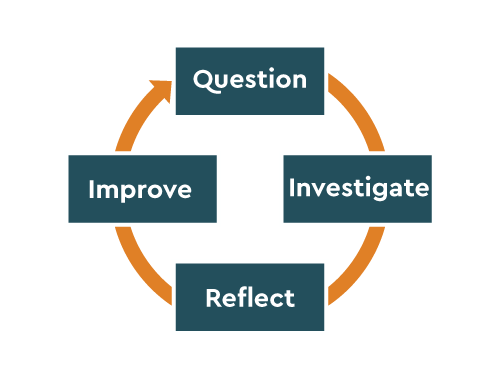When engaging with program evaluation, a nonprofit board of directors should not fall into the trap of playing only an oversight role. Board members are highly-skilled volunteers who live half in the organization and half in the community: they add valuable perspective to the results of program evaluation. But, as anyone who has served on or worked with a board knows, without some parameters, it’s easy to get bogged down in the details.
This is the second of three articles on the role of nonprofit boards in program evaluation. Previously, we showed that the board’s role in evaluation depends on the type of evaluation. In the third article, we discuss the ways in which a board can support program evaluation in its organization.
The way in which a board uses program evaluation depends on the context of the board and the organization: if your board and staff are happy with how you use program evaluation already, there’s no need to change. However, if you struggle to use program evaluation at the board level, the following tips can help:
When does a board engage with program evaluation?
 A board looks at program evaluation after the staff is finished with it. In the previous article, we shared the four basic steps of every evaluation: question, investigate, reflect, and improve. It is critical that the staff complete each of these steps before presenting to the board (and that the board encourages staff to do so). If staff present the board with raw program evaluation results, the board spends too much time understanding each item, and not enough time discussing the overall meaning.
A board looks at program evaluation after the staff is finished with it. In the previous article, we shared the four basic steps of every evaluation: question, investigate, reflect, and improve. It is critical that the staff complete each of these steps before presenting to the board (and that the board encourages staff to do so). If staff present the board with raw program evaluation results, the board spends too much time understanding each item, and not enough time discussing the overall meaning.
When discussing program evaluation, staff should present the board with a report that summarizes the following:
- The purpose of the evaluation.
- Analysis of what the results mean with a summary of important findings.
- A description of the actions the staff will take as a result.
This high-level report is what the board should discuss. This is an opportunity to consider how the organization can strengthen and broaden the impact of its programs to advance the organization’s mission. Board members should feel free to ask clarifying or probing questions of the staff, but unless the board senses a major issue that would threaten the organization, it should not redo the staff’s analysis of the raw results. It should reassure staff that the board is interested in progress and improvement—not staff accountability. See the next article “Supporting Program Evaluation” for some tips about engaging with staff in reviewing program evaluation.
What does the board discuss?
At this point, the staff should have completed each of the four evaluation steps and provided a summary report. Now, the board gets a crack at sense-making. Their scope, however, is larger: as representatives of both the community and the organization, the board considers questions like these:
- What do these results and analysis tell us about our programs and their impact?
- What are our new insights?
- What old patterns reoccur?
- What do we know about our community that adds insight to these results?
- Are we meeting the needs of our community?
- What gaps must we address?
- How do we communicate our programs’ impact to our community and stakeholders?
- Who should hear about this?
- Where can we leverage support?
- What can we do to support our programs and their impact?
- Should we reallocate resources (financial, human, etc.)?
- How can we support further evaluation or program improvement?
The results of these conversations add value and guide the organization and staff. They also inform the next round of program evaluation.
Next up is our third of three articles on understanding evaluation, which describes how a board can support it’s organization’s program evaluation.
